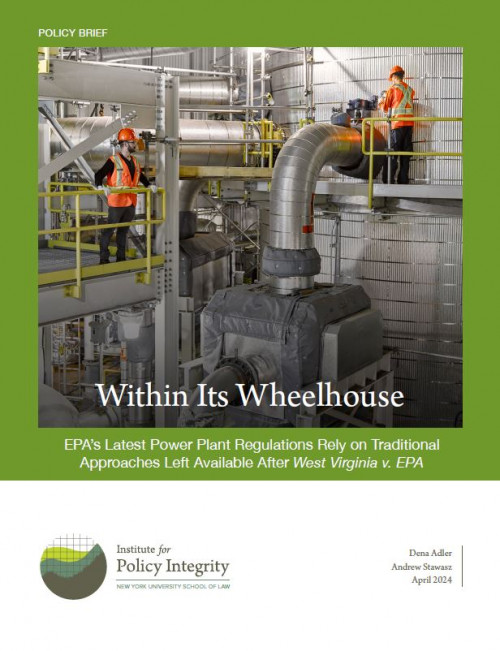In May 2023, the Environmental Protection Agency (EPA) proposed new limits for greenhouse gas (GHG) emissions from certain fossil-fuel-fired power plants under Section 111 of the Clean Air Act. Section 111 requires EPA to set limits reflecting the emission reductions achievable by applying what the agency determines to be the “best system of emission reduction” (BSER) that “has been adequately demonstrated” and that meets certain other statutory factors. For coalfired power plants scheduled to retire in or after 2040, and new baseload gas-fired power plants, EPA determined the BSER to include carbon capture and storage (CCS), a set of technologies that filter out carbon dioxide before it reaches the atmosphere and discard it safely, for example, by sequestering it underground.
Some critics have suggested that EPA’s new rule triggers the major questions doctrine. Under that doctrine, a court should look skeptically on the agency action in extraordinary cases involving unprecedented and transformative applications of agency authority.
But the major questions doctrine is inapplicable to EPA’s use of CCS in its proposed regulations. Rather than propose a new approach that would transform its exercise of statutory authority, EPA has embraced one of its most traditional and well-established regulatory practices: setting emission limits based on pollution controls that cause a regulated source to operate more cleanly. EPA’s approach to setting limits reflecting the emission reductions achievable through CCS is well in line with decades of practice and the existing statutory regime. EPA has stayed comfortably within the wheelhouse of Section 111 authority that the Supreme Court explicitly left available in its 2022 West Virginia v. Environmental Protection Agency decision.
This policy brief details why EPA’s latest proposal to limit GHG emissions from power plants fits neatly within the bounds of the legal authority left intact after West Virginia. It then explains how states and operators retain flexibility to use emission trading and averaging programs to implement EPA’s regulations.

